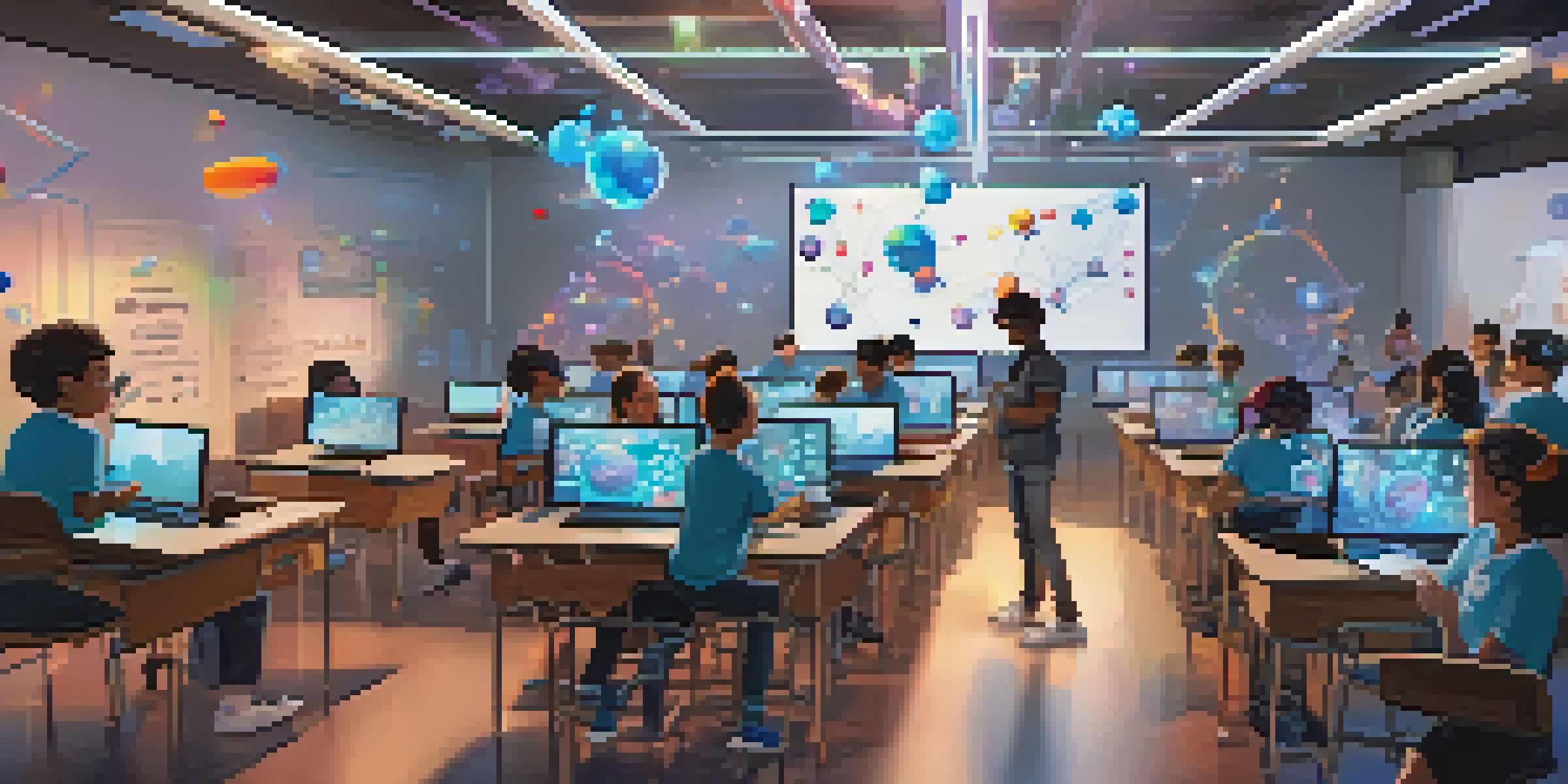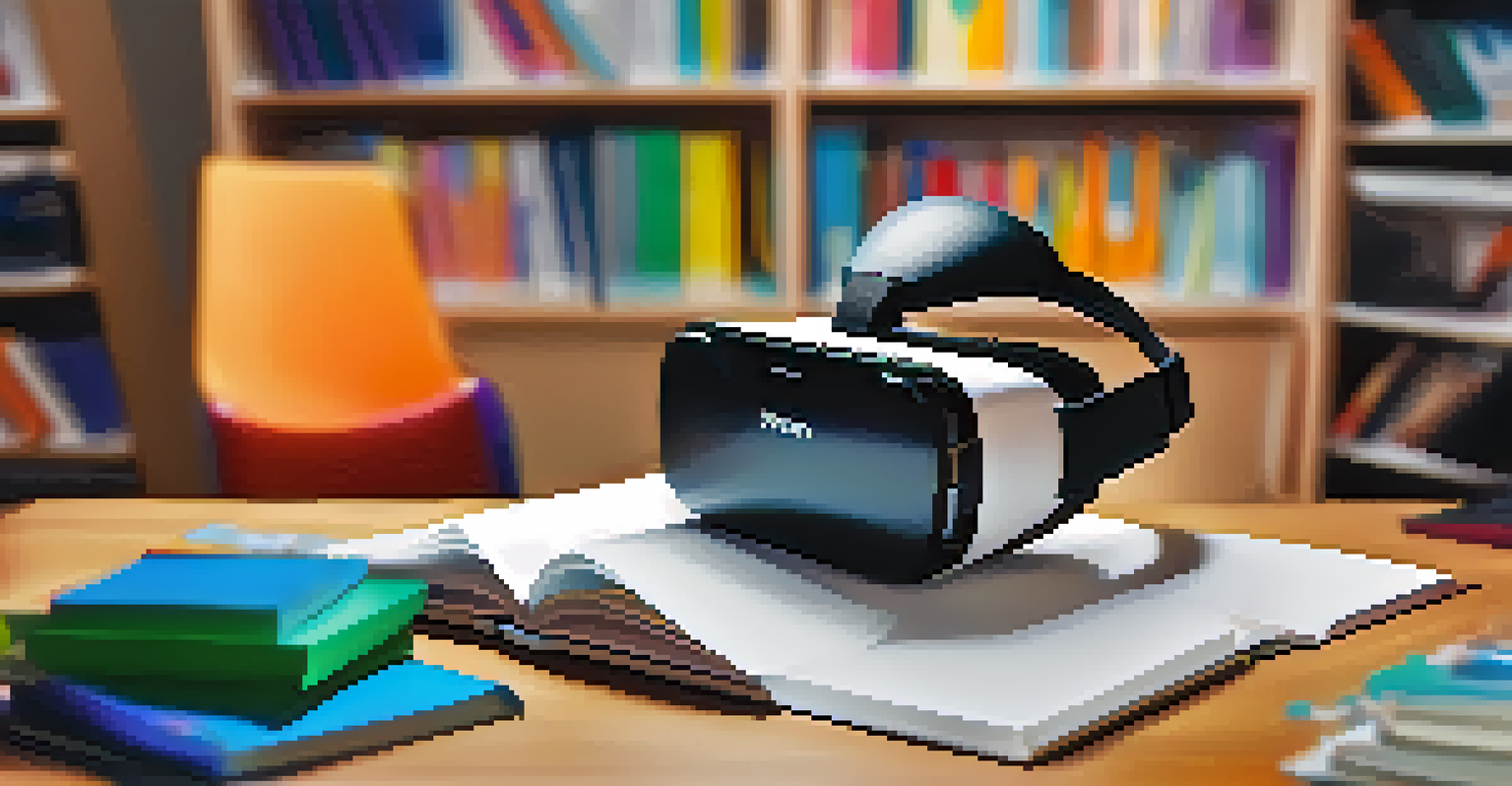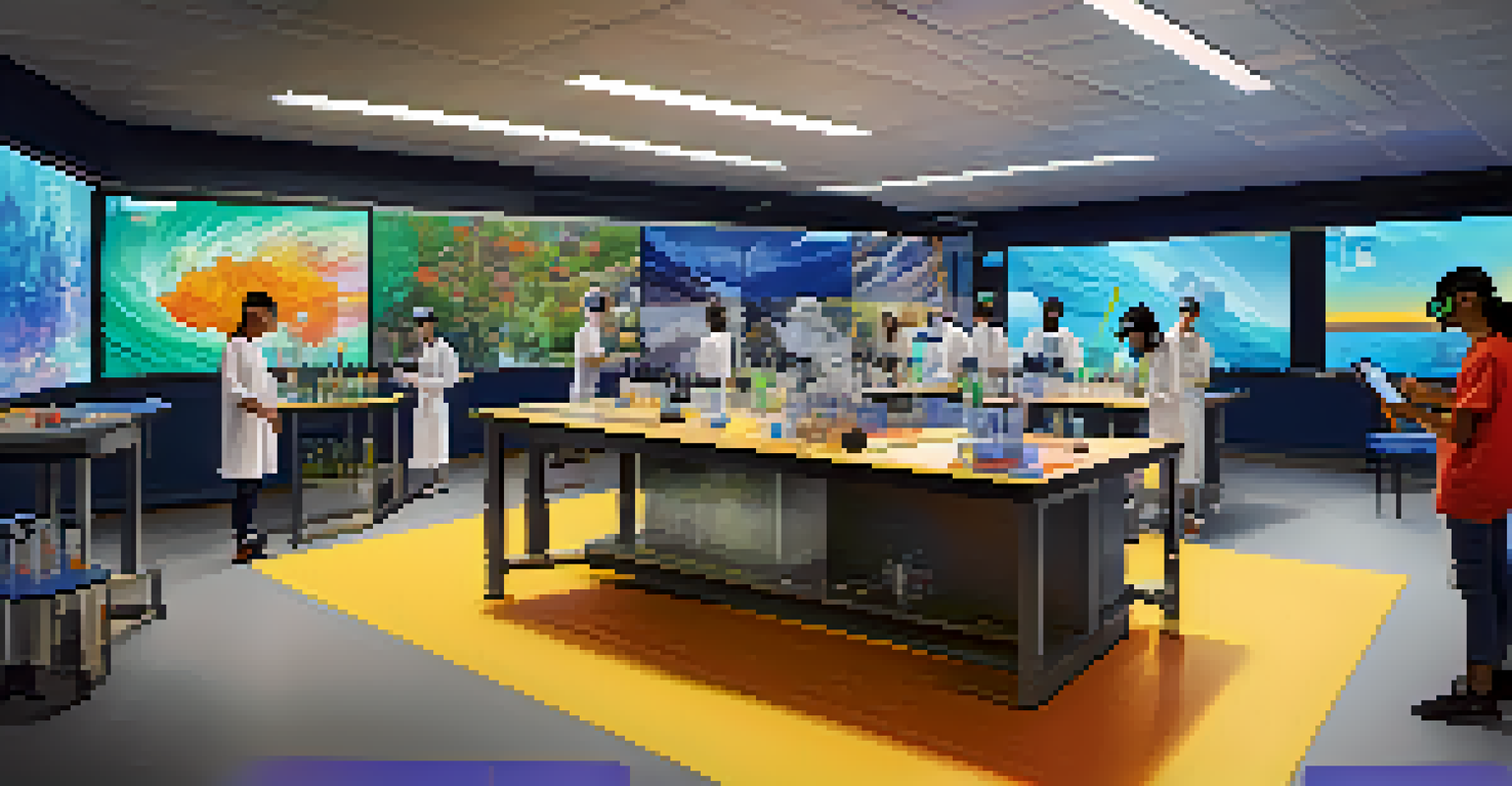Harnessing Virtual Reality for Enhanced Collaborative Learning

Understanding Collaborative Learning and Its Benefits
Collaborative learning is an educational approach that emphasizes teamwork, fostering communication and problem-solving skills among students. By working together, learners can share diverse perspectives, enhancing understanding and retention of information. This method not only builds social skills but also prepares students for real-world scenarios where collaboration is key.
Collaboration allows us to know more than we are capable of knowing by ourselves.
While traditional collaborative learning relies on face-to-face interactions, it can be limited by geographical and temporal constraints. Virtual reality (VR) has emerged as a game-changer, providing immersive environments where students can connect regardless of their physical location. This technology allows for rich, interactive experiences that can mimic real-world settings and challenges.
Imagine students from different continents coming together in a virtual classroom, discussing ideas as if they were sitting side by side. With VR, learners can engage in activities that require teamwork, such as science experiments or historical reenactments, breaking down barriers and making learning more dynamic and engaging.
The Role of Virtual Reality in Education
Virtual reality transforms traditional learning by creating immersive simulations that engage students in ways textbooks cannot. This technology allows learners to experience concepts firsthand, bridging the gap between theory and practice. For instance, medical students can practice surgeries in a virtual environment, honing their skills without the risks associated with real-life procedures.

Moreover, VR caters to various learning styles, making education more inclusive. Visual learners can benefit from 3D models, while kinesthetic learners can manipulate virtual objects, reinforcing their understanding through active participation. This adaptability is crucial in catering to diverse student needs and enhancing overall educational outcomes.
Collaborative Learning Enhances Skills
Collaborative learning fosters teamwork, communication, and problem-solving abilities among students, preparing them for real-world challenges.
As VR technology becomes more accessible, its potential in education continues to grow. Schools and universities are beginning to integrate VR into their curricula, providing students with unique opportunities to explore complex subjects in a hands-on way, ultimately enriching their learning experiences.
Creating Engaging Virtual Learning Environments
To harness the full potential of VR in collaborative learning, educators must design engaging virtual environments that encourage interaction. This involves creating scenarios where students can explore, experiment, and collaborate on projects. For example, a virtual chemistry lab can allow students to conduct experiments together, fostering teamwork and critical thinking.
The future of learning is not about the technology; it’s about the people using it.
Additionally, incorporating gamification elements can make learning even more appealing. By turning educational activities into games, educators can motivate students to participate actively in their learning process. Rewards, challenges, and leaderboards can create a sense of competition and excitement, keeping learners engaged.
Ultimately, the goal is to create a virtual space where students feel comfortable sharing ideas and taking risks. By designing environments that prioritize collaboration and creativity, educators can enhance the overall learning experience and encourage deeper understanding among students.
Benefits of VR for Collaborative Learning
One of the most significant benefits of using VR for collaborative learning is the ability to simulate real-world experiences without the associated risks. Students can work together to solve problems or navigate challenging scenarios, gaining practical skills in a safe environment. This hands-on approach fosters a deeper understanding of the subject matter.
Moreover, VR can enhance engagement and motivation among learners. When students are immersed in a virtual world, they become active participants in their education rather than passive recipients of information. This increased engagement can lead to higher retention rates and improved academic performance.
VR Transforms Educational Experiences
Virtual reality creates immersive simulations that engage students, bridging the gap between theory and practice while catering to diverse learning styles.
Finally, VR breaks down geographical barriers, allowing students from different backgrounds and cultures to collaborate. This diversity enriches the learning experience, exposing students to various perspectives and ideas that they might not encounter in a traditional classroom setting.
Challenges in Implementing VR in Education
While the advantages of VR in collaborative learning are promising, several challenges must be addressed. One major hurdle is the cost of VR technology, which can be prohibitive for some educational institutions. Schools and universities must weigh the benefits against the financial investment required to implement VR systems.
Additionally, there is a learning curve associated with using VR technology effectively. Educators need proper training to integrate VR into their teaching practices seamlessly. This training ensures that teachers can facilitate collaborative learning experiences and utilize the technology to its fullest potential.
Lastly, not all students may have equal access to VR equipment, leading to disparities in learning opportunities. It’s essential for institutions to find ways to provide equitable access, ensuring that every student can participate in immersive learning experiences regardless of their background.
Future Trends in VR and Collaborative Learning
As technology continues to evolve, we can expect to see exciting advancements in VR and its applications in education. One notable trend is the integration of artificial intelligence (AI) with VR, allowing for more personalized learning experiences. AI can adapt scenarios based on individual student performance, providing tailored support in real-time.
Moreover, the development of more affordable and user-friendly VR solutions will likely drive wider adoption in schools. As costs decrease and accessibility increases, more institutions will be able to incorporate VR into their curricula, creating diverse learning environments that were previously unimaginable.
Challenges in VR Implementation
Despite its benefits, implementing VR in education faces challenges such as cost, training needs for educators, and ensuring equitable access for all students.
Finally, we may see a shift toward hybrid learning models that combine traditional and virtual methods. This flexibility will enable educators to leverage the strengths of both approaches, providing students with a comprehensive and engaging learning experience that prepares them for the demands of the future.
Conclusion: Embracing VR for Collaborative Learning Success
In conclusion, harnessing virtual reality for collaborative learning presents a transformative opportunity in education. By creating immersive and engaging environments, educators can enhance student interaction, engagement, and understanding. The benefits of VR, from practical skill application to fostering global collaboration, are too significant to overlook.
However, as with any emerging technology, challenges must be addressed to ensure successful implementation. By investing in training, ensuring equitable access, and exploring innovative solutions, schools can overcome these hurdles and fully embrace the potential of VR.

As we look to the future, the integration of VR in education will undoubtedly reshape the way students learn and collaborate. By prioritizing these efforts, we can create a more dynamic and inclusive educational landscape that prepares learners for success in a rapidly changing world.